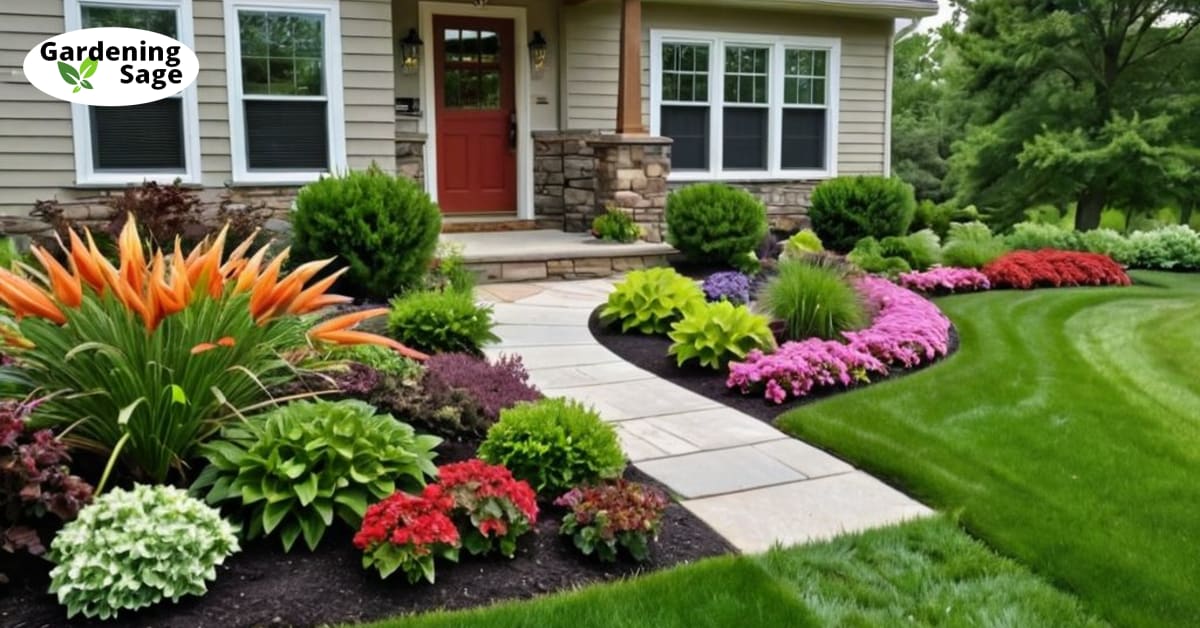Creating an Eye-Catching Front Landscape
Turning the space in front of your home into an inviting oasis requires thoughtful planning and creative design. The right combination of hardscaping, plants, and decorative accents can transform an empty yard into a gorgeous focal point that enhances curb appeal. Follow these tips to develop a beautiful, functional landscape for the front of your house that not only reflects your personal style but also complements the architectural features of your home.
Take Stock of the Space
Start by examining the area you want to landscape. Consider the size, shape, sunlight exposure, drainage, and existing features. Measure the space and sketch it out on paper, including dimensions and potential areas for planting or hardscaping. Note obstructions like trees, utilities, and slopes. This will help you determine the layout and select plants suited to the conditions. Think about how you use the space now and how you’d like to use it in the future. Do you envision a space for entertaining, a play area for children, or a serene spot for relaxation? Your current and future needs will guide the design process.
Create Curb Appeal
The front yard makes the all-important first impression. Frame the entryway to highlight your home’s architecture. Use eye-catching plants and hardscaping to direct visitors to the front door. For example, an arched trellis covered in blooms leads visitors along a path to the entrance. Low hedges, decorative fencing, and container gardens also help define the space and create a sense of enclosure without obstructing the view of your home. Consider the color scheme of your house when selecting plants and materials to create a cohesive look.
Hardscaping Accents
Incorporate hardscaping like paths, patios, benches, and garden beds to add structure and functionality to your landscape. Curving paths feel welcoming, while straight lines convey formality and can make a small space feel larger. Flagstone, bricks, gravel, and pavers make attractive, low-maintenance paths that complement the style of your home. Use benches or statuary as focal points to draw the eye and provide a place to pause and enjoy the garden. Raised garden beds and retaining walls add visual interest and can help manage sloped areas. Ensure good drainage with proper grading and consider the use of permeable materials to prevent water runoff.
Plant for All-Season Interest
Select a variety of plants with seasonal appeal to ensure your landscape looks attractive year-round. Evergreen shrubs, trees, and perennials provide winter structure and greenery when other plants have died back. Flowering plants like azaleas, rhododendrons, and bulbs bring spring color and can be coordinated to bloom in succession. Summer-blooming annuals and perennials like petunias, marigolds, and coneflowers create vibrant displays and can be planted in garden beds or containers for added flexibility. Ornamental grasses and sedums shine in fall with their interesting textures and colors. Foliage plants such as hostas and heucheras offer color and texture throughout the growing season. Plant in layers, with taller trees and shrubs in the back to create a backdrop and lower plants in front to ensure visibility and access.
Finishing Touches
Details like lighting, garden art, containers, and mulch add personality and finish the look of your landscape. Path lighting creates an inviting glow in the evening and can enhance safety by illuminating walkways. Sculptures, birdbaths, and wind chimes provide visual interest and can reflect your personal taste. Plant containers flanking the entryway can be changed seasonally to keep the look fresh and can include a mix of perennials and annuals for long-lasting appeal. Mulch helps control weeds, regulates soil moisture, and brings a finished look to garden beds with its variety of colors and textures.
Proper Maintenance
Once installed, the front landscape needs regular care to stay looking its best. Weed and prune routinely to maintain the shape and health of your plants. Inspect plants for pests or diseases and treat any issues promptly to prevent them from spreading. Adjust the irrigation schedule seasonally to ensure plants receive the right amount of water without waste. Replenish mulch annually to maintain its appearance and benefits. Replace damaged hardscape features as needed to keep the area safe and attractive. Change out container plantings each season for fresh appeal and to reflect the changing seasons. With proper maintenance, your front yard will provide an attractive welcome for years to come and will continue to add value to your home.














